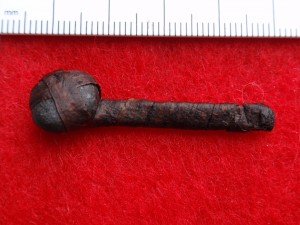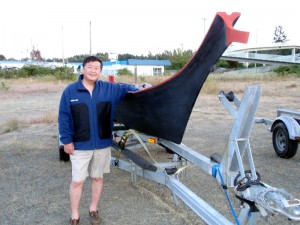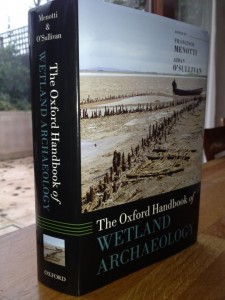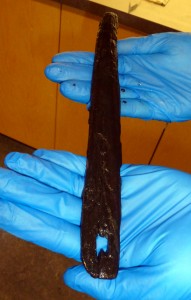 A unique artifact identified as a “Toy War Club†was recovered at Qwu?gwes and appears to reflect an example of children’s cultural material at the site–please review this find and let us know of any other finds similar to this?Â
A unique artifact identified as a “Toy War Club†was recovered at Qwu?gwes and appears to reflect an example of children’s cultural material at the site–please review this find and let us know of any other finds similar to this?Â
This artifact was one of the few composite artifacts, combining stone and fiber, found at Qwu?gwes. It was constructed by attaching a stone pebble head to a red cedar split wood handle using cherry bark strips as the binding material. Although this artifact was small, the discovery of a toy used in play by a child on the beach 600 years ago is a truly spectacular and very human find. For full report: Toy War Club



